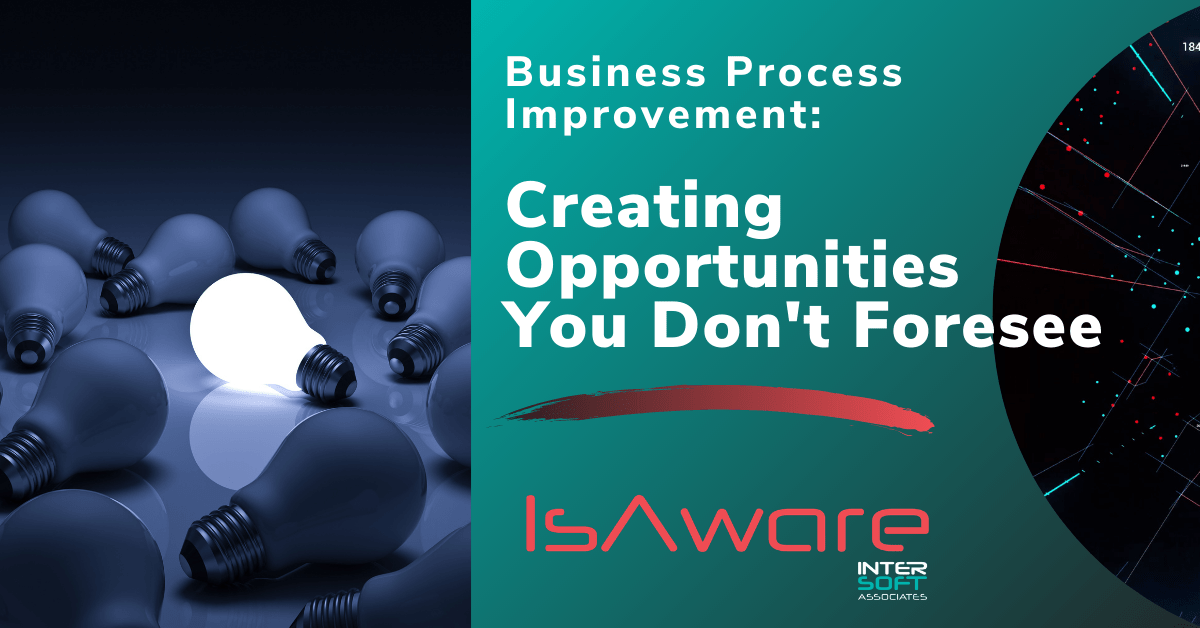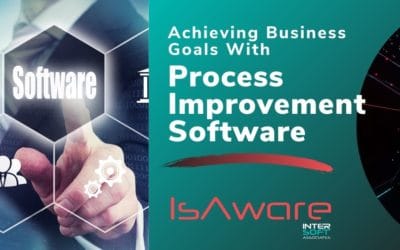When your business processes have grown inefficient or ineffective, they often present obvious pain points. Redundancies, duplicate efforts, tasks taking too long to complete, multiple data points – these are all symptoms of business processes that need attention. What comes next, however, is perhaps more interesting – when broken processes are repaired, or old processes are innovated against, new opportunities emerge that maybe could have never existed before. Read on for real-world examples and illustrations of how custom software development can help improve business processes, ultimately creating benefits, opportunities and competitive advantages.
What is Business Process Improvement?
We’ve discussed before how process improvement is the proactive task of reviewing business processes, identifying problems, and making improvements with the goal of helping every process run smoother and more efficiently.
Custom Software can help in business process improvement by eliminating friction in how data is shared and used, by creating more efficiencies around existing business processes and by helping to create entirely new and improved business processes where software, systems and applications are concerned. An exciting product of improved business processes is the potential for entirely new approaches that can be realized when outdated processes are innovated against.
Examples of Business Process Improvement
At InterSoft Associates we have a long history of helping companies do more than they might have thought possible to improve processes and create new opportunities.
Better Dispute Resolution
When Pearson was trying to improve payment processes within New York City Public Schools, we helped them modernize an outdated process on how payment was to be received when sending books to schools. Where previously a time consuming and error-prone manual process was involved requiring a proof-of-delivery prior to payment, our Custom Software solution integrated with shippers, such as FedEx, UPS and DHL, and internal accounting platforms to instantly and automatically identify when a delivery of books was received and generate an invoice for payment together with proof-of-delivery.
An ancillary benefit to this process was, with proofs of delivery, there was now an interface to the entire collection process. If someone called with a problem about delivery or a question about an invoice, an email could quickly show proof in the process. This helped Pearson resolve any disputes quickly and accurately, where previously, in addition to an inefficient system, disputes were difficult to resolve because it required several layers of slow, confusing investigation. Moreover, the delivery details only remained on the shipper’s site for a limited time.
Consolidating Data
A company like Pearson that grows through acquisition will often have multiple databases of different ages, built by different people or business units and intended to fulfill distinct, but similar, objectives. Over time, systems to manage these databases like FileMaker, Access or FoxPro can stop serving the organization’s overall objectives.
As part of our discovery process to understand how to increase efficiency for sharing data, we listened to many different stakeholders to understand where the pain points and requirements for success existed. While every business unit has unique and distinct needs, we were able to help them realize that 80% of their needs had something in common. This meant we could develop a solution that would solve most of their consistent, in-common issues and then focus on customizing for their specific, differentiated functionality. Ultimately this let us develop custom systems that helped the entire organization better manage processes and create a uniform company-wide standard..
With this realization came new ideas on the 20% that seemed unique and differentiated, and we proposed ways to unify processes so that even that 20% could become more consistent throughout the organization. This required a lot of listening and collaboration among stakeholders so they could hear and learn from what others were doing and why, helping them see new possibilities in their “special” processes.
By the time we were finished, 95% of the organization was running on a standard, unified process. Just by talking together, we were able to achieve a more unified approach. This kind of consistency means increased efficiency, fewer unknowns and opportunities for error, and less siloing of data and details.
We like to say the results of this kind of analysis is “1+1 = 3” – the outcomes are greater than the parts because of the unexpected benefits or opportunities created.
Cash Forecasting
In another project, we helped an organization develop a better cash forecasting process, taking a lot of data from various systems and presenting a unified view of the data. There were multiple divisions in the company, each with its own data management, creating a lot of disparity and confusion when it came time to analyze how this data impacted cash flow.
When we started working with one division and demonstrating what could be done, other divisions took notice and wanted something similar. Others recognized how their manual processes were creating problems. Because they started collaborating with people and processes outside their own departments, we were able to help them achieve a broader organizational vision.
Ultimately we were able to create a faster, easier cash forecasting system company-wide. Once that system was in place, new opportunities emerged. Their collection agents had new insights on where to focus, such as how larger clients compared to smaller clients. They could then measure their attempts for follow-ups and collections, which helped with time management. All of this, in turn, impacts profitability.
Putting Process Improvement In Motion
The benefits of improving business processes are often more exponential than linear. When the most obvious issues are addressed, the outcomes and processes to achieve them help companies see their processes, and the data that drive them, in new and interesting ways. Solving the problem reveals potential and opportunity that might not have existed before. It’s this collaborative, inclusive approach that helps us help leaders to better understand their processes, how their people are being impacted, and what’s possible with a new point of view.






